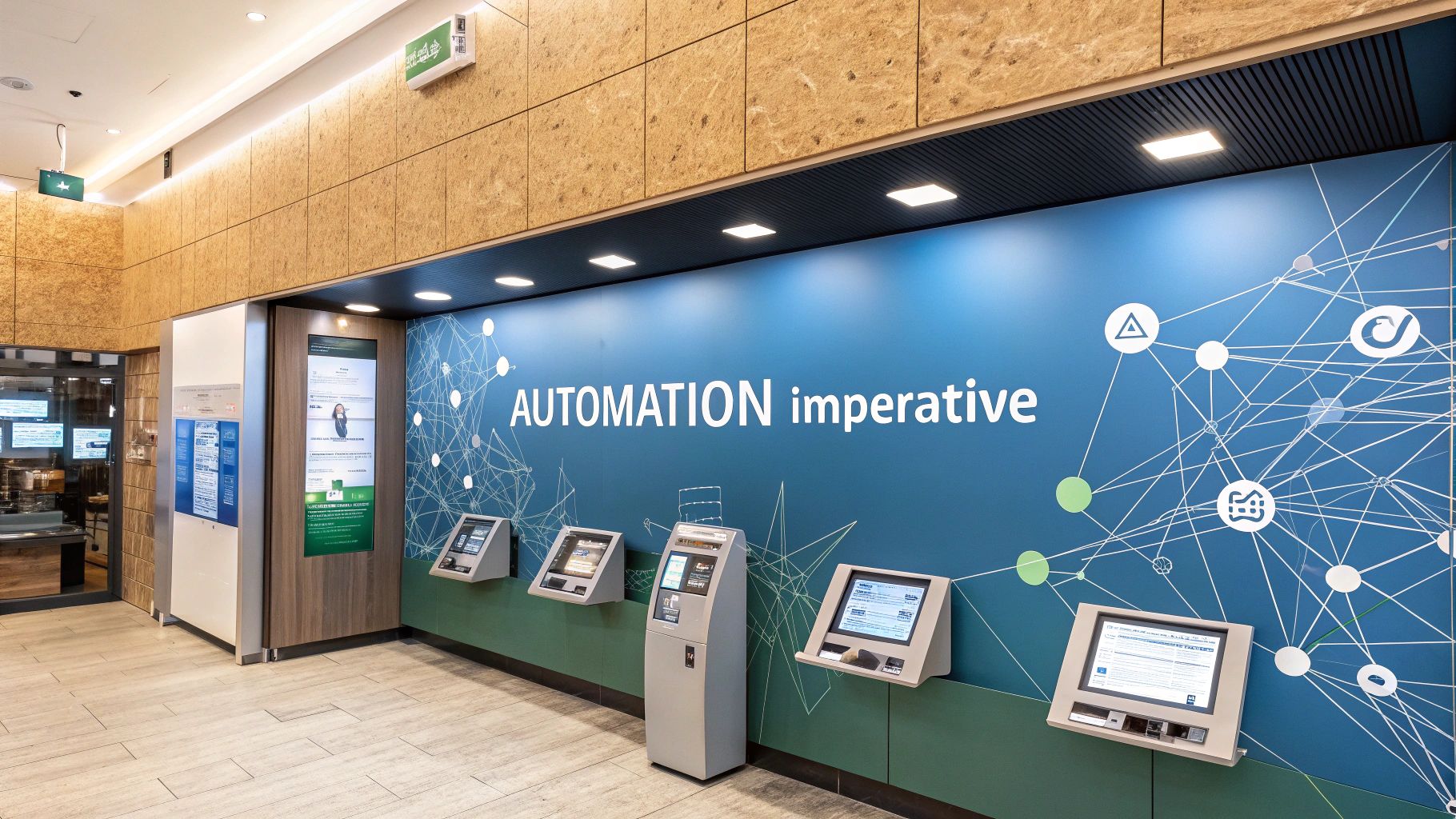Revolutionize Your Bank with BIAS, the Bank Intelligence and Action System
Visbanking BIAS Vision
Estimated reading time: 5 minutes
Table of contents
In today's rapidly evolving financial landscape, banks are under constant pressure to innovate and adapt to changing customer demands and market conditions. The key to success lies in harnessing the power of data and technology to make informed decisions and take proactive actions. That's where BIAS, the Bank Intelligence and Action System, comes into play. In this blog post, we will explore how BIAS can revolutionize your bank and position it for a brighter future.
Understanding BIAS: Bank Intelligence and Action System
The Vision is, short for Bank Intelligence and Action System, is a cutting-edge solution designed to empower banks with real-time insights, predictive analytics, and automation capabilities. It acts as a central nervous system for your bank, seamlessly integrating data from various sources and providing actionable intelligence that can drive informed decision-making.
This revolutionary system is engineered to address the most pressing challenges that banks face today:
1. Data Overload:
Modern banks deal with an overwhelming amount of data on a daily basis. BIAS streamlines this data and converts it into actionable insights, helping you make sense of customer behaviors, market trends, and internal operations.
2. Customer-Centric Approach:
In an era where customers expect personalized services, BIAS enables banks to create tailored experiences by analyzing customer data. This leads to improved customer satisfaction and loyalty.
3. Risk Management:
BIAS employs advanced analytics to identify potential risks and fraud in real-time, allowing banks to take proactive measures to protect their assets and customers.
4. Operational Efficiency:
Automation is at the heart of BIAS, optimizing internal processes, reducing operational costs, and enabling staff to focus on higher-value tasks.
5. Growth and Profitability:
By leveraging predictive analytics, BIAS assists banks in identifying growth opportunities, cross-selling products, and enhancing profitability.
The Key Features of BIAS
Now that we've outlined the overarching benefits of BIAS, let's delve into its key features that enable these transformations:
1. Real-Time Data Integration:
The Vision is seamlessly integrates data from multiple sources, including transaction records, customer profiles, and market data. This real-time data integration ensures that decision-makers have access to the most up-to-date information.
2. Predictive Analytics:
Through machine learning algorithms, BIAS can forecast market trends, customer behaviors, and even potential financial risks. This predictive capability empowers banks to stay ahead of the competition.
3. Automated Decision-Making:
BIAS can automate routine decisions and processes, such as loan approvals or fraud detection. This not only reduces human error but also accelerates response times.
4. Customized Dashboards:
The system provides customized dashboards and reports that cater to the specific needs of your bank's various departments, from marketing to risk management.
5. Scalability:
Whether you're a community bank or a multinational financial institution, BIAS is designed to scale with your organization, ensuring that it continues to meet your evolving needs.
Case Studies: Real-World Impact of BIAS
To illustrate the tangible benefits of BIAS, let's take a look at some real-world case studies of banks that have already implemented this groundbreaking system:
Case Study 1: Streamlining Operations
A regional bank was struggling with manual processes and a lack of real-time insights. After implementing BIAS, they reduced operational costs by 30% and achieved a 20% increase in overall efficiency.
Case Study 2: Enhancing Customer Experience
A national bank used BIAS to analyze customer data and create personalized offerings. This led to a 15% increase in customer satisfaction and a 10% rise in cross-selling success.
Case Study 3: Risk Mitigation
An international bank integrated BIAS to improve risk management. They experienced a 25% reduction in fraud incidents and a 20% decrease in non-performing loans.
Case Study 4: Accelerating Growth
A growing bank used BIAS to identify underserved market segments and launched targeted marketing campaigns. This resulted in a 12% increase in new customer acquisitions and a 15% boost in revenue.
How to Implement BIAS in Your Bank
Integrating BIAS into your bank is a strategic move that requires careful planning and execution. Here's a step-by-step guide to help you get started:
1. Assess Your Needs: Identify the specific challenges and goals you want to address with BIAS. This will guide the implementation process.
2. Choose the Right Vendor: Select a reputable vendor with a proven track record in the banking industry and experience in implementing BIAS.
3. Data Integration: Work with the vendor to integrate your bank's data sources into BIAS. Ensure that data is clean, accurate, and up to date.
4. Training and Adoption: Train your staff on how to use BIAS effectively. Encourage adoption and provide ongoing support.
5. Monitor and Optimize: Continuously monitor the system's performance and gather feedback from users. Use this information to optimize BIAS for your bank's evolving needs.
Conclusion
In conclusion, the banking industry is undergoing a profound transformation, and BIAS, the Bank Intelligence and Action System, is at the forefront of this revolution. By harnessing the power of data, analytics, and automation, BIAS empowers banks to make informed decisions, enhance customer experiences, manage risks effectively, improve operational efficiency, and drive growth and profitability.
If your bank is ready to embrace the future of banking, it's time to consider implementing BIAS. The success stories of banks that have already adopted this system are a testament to its transformative power. Don't get left behind; revolutionize your bank with BIAS today and position yourself for a brighter and more prosperous future in the ever-changing financial landscape.
Similar Articles

Brian's Banking Blog
Key Trends in the Banking Industry for Bank Executives

Brian's Banking Blog
Mastering Operations in the Banking Industry for Strategic Advantage

Brian's Banking Blog
What Is Competitive Intelligence in Banking?

Brian's Banking Blog
What Is Market Intelligence? A Guide for Bank Executives

Brian's Banking Blog
Automation in Banks: A Strategic Growth Imperative

Brian's Banking Blog
Mastering Commercial Banking Relationship Management: A Data-Driven Executive Guide

Brian's Banking Blog
8 Historic Banks That Merged: Lessons for Today's Executive

Brian's Banking Blog
Uniform Bank Performance Reports: A Strategic Guide for Bank Executives

Brian's Banking Blog
Optimizing Net Interest Income for Bank Profitability

Brian's Banking Blog